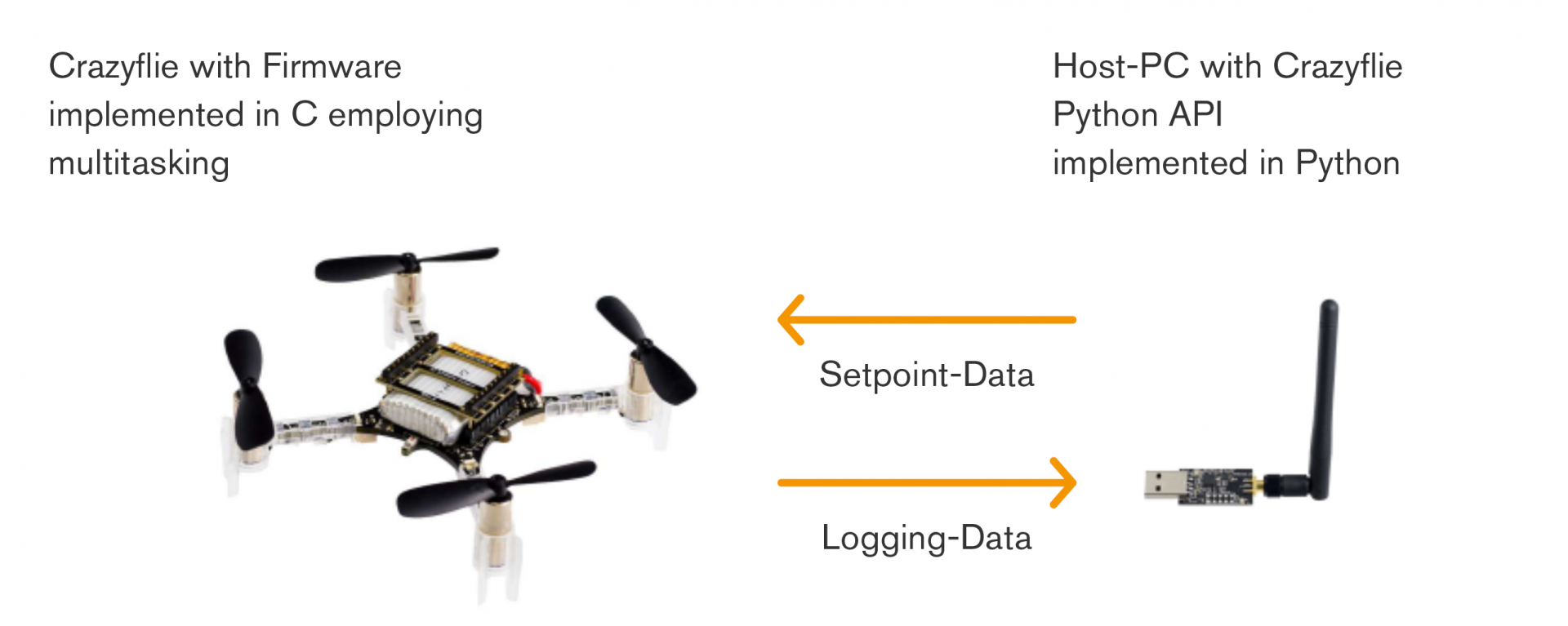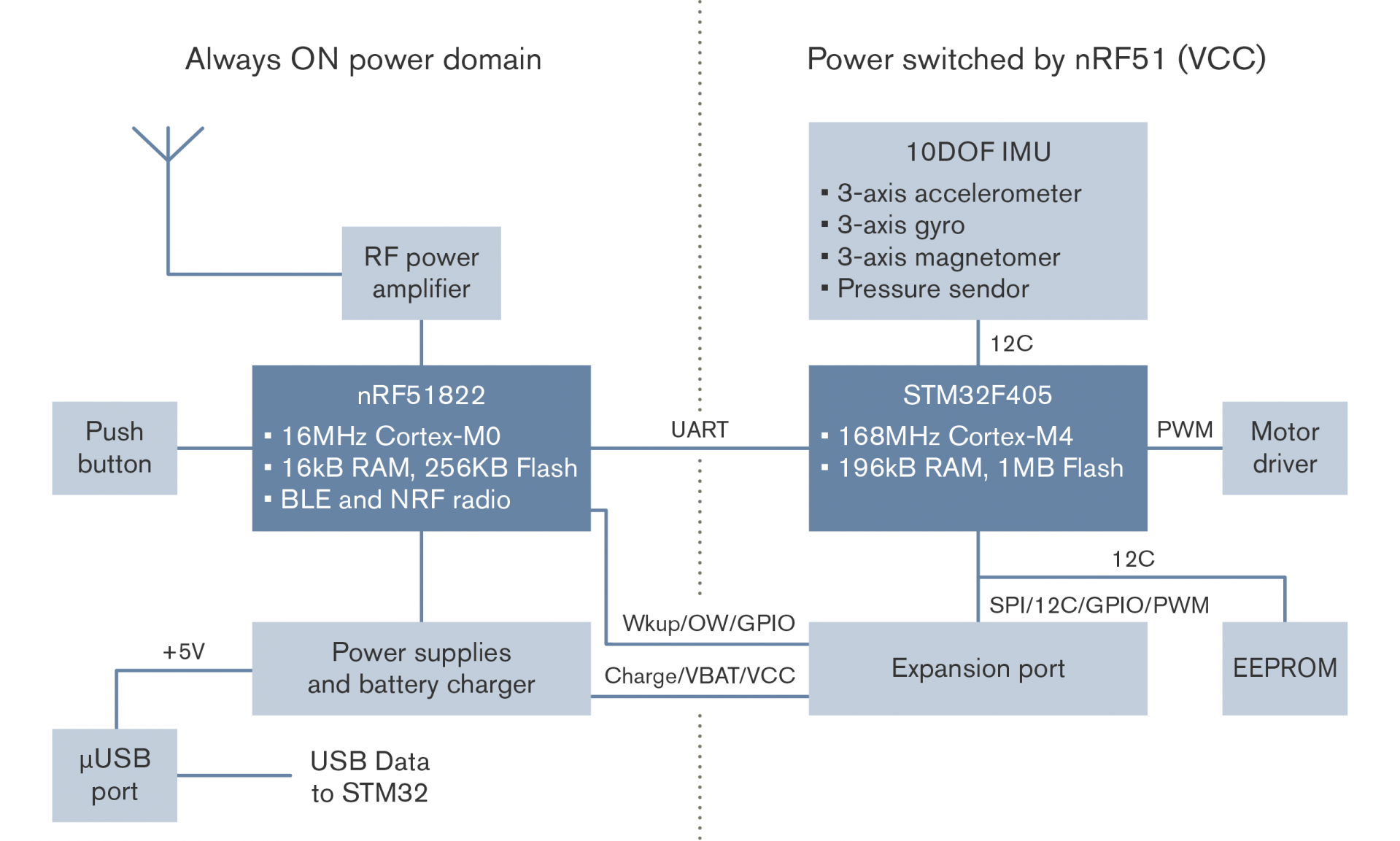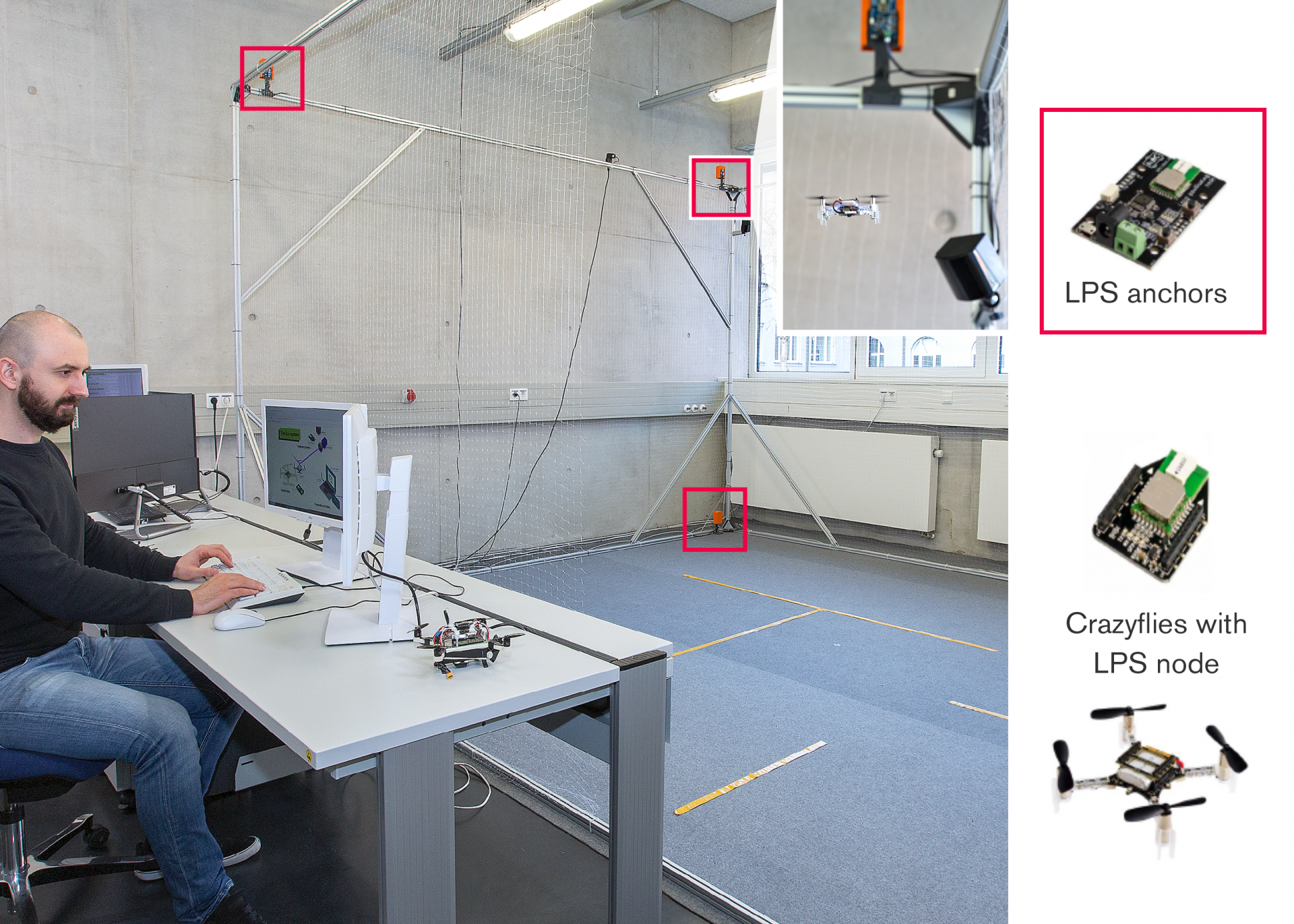
- Mechanical and Process Engineering
- Research
- Laboratories
- Overview and descriptions
- Research Platform Crazyflie
Cooperative Control Lab
Research Platform Crazyflie
Demonstration Hardware
In order to judge their abilities to cope with real world scenarios, we implement and evaluate our algorithms on a real physical system. Therefore, we want to implement our algorithms on a real target system. Searching for a laboratory-scale demonstrator system for indoor-operation in a limited volume with low safety requirements, we came across the Crazyflie 2.0/2.1 mini-quadcopter from Bitcraze AB. The 27 g lightweight quadcopter comes with an open-source firmware, a ready-to-use flight controller and centralized bluetooth LE based radio communication protocol as illustrated in Fig. 4.
The Python API, which is also freely available, implements a logging framework so that starting developing and evaluating algorithm performance is made easier. The Crazyflie architecture is depicted in Fig. 5. Because of its small size, limited load-bearing capacity and limited computational resources, Crazyflies have to cooperate with one another for more complex tasks. In order to extend the abilities of a Crazyflie agent, it can be equipped with a maximum of three different sensor decks where a selection is shown in Fig. 6.
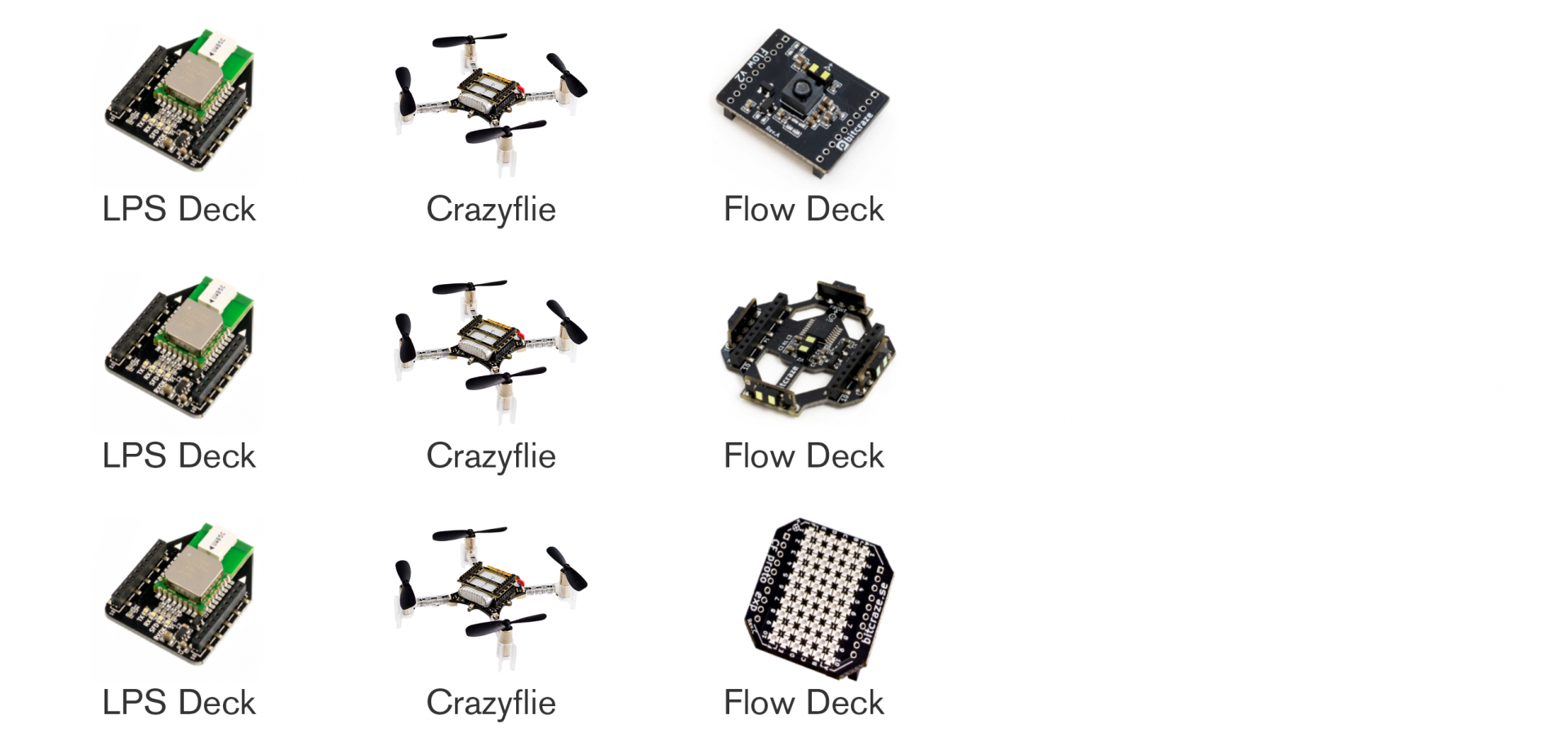
Indoor Navigation Setup
The ability of an agent to localize itself within the environment is a key-ability to operate safely in close vicinity to other agents and objects. In addition, navigation accuracy seriously affects the ability of mapping unknown environments, especially if a group of agents tries to agree on a common map where each one is subject to its individual navigation error.
The Crazyflie’s main circuit board is equipped with a 3-axis MEMS IMU, which provides accelerations and turn rates for all three body axes. However, solely relying on those measurements estimating the current agent’s position and attitude will lead to significant drift rendering automated flight impossible. This can be avoided fusing additional measurements. Through a permanently installed ultra-wideband (UWB) based system (Loco-Positioning System) depicted in Fig. 7 that is analogous to a GNSS system in terms of its function, each agent can determine time-of-flight differences of UWB signals transmitted by two spatially offset anchors [7], [8]. This time-difference of arrival (TdoA) information can be used in a data-fusion filter to derive the agent’s absolute position and attitude. Because of the high bandwidth of UWB signals a high penetration capability regarding non-metal obstacles is achieved, enabling localization for Crazyflies operating in obstructed environments. The resulting localization is in the range of 15 cm.
For scenarios requiring a higher localization accuracy and also to serve as ground truth measurement system for assessing data-fusion filter quality, we also installed the infrared (IR) based Lighthouse system [9]. It relies on two spatially offset HTC Vive v2 base stations emitting an IR light plane sweep which is sensed by the Lighthouse deck mounted onto a Crazyflie agent achieving accuracy between 2 and 4 cm. However, this localization method requires direct line-of-sight contact between the deck and the base station, which cannot be guaranteed for scenarios in obstructed environments.
Contributing to the Crazyflie-Community – Github-Repository
As a beneficiary of the open-source framework around the Crazyflie, we also share our contributions with the community. Currently we are providing our alternate Navigation Algorithm (see project “(Cooperative) Navigation”) at Github: github.com/HSaugsburgBitcraze/crazyflie-firmware
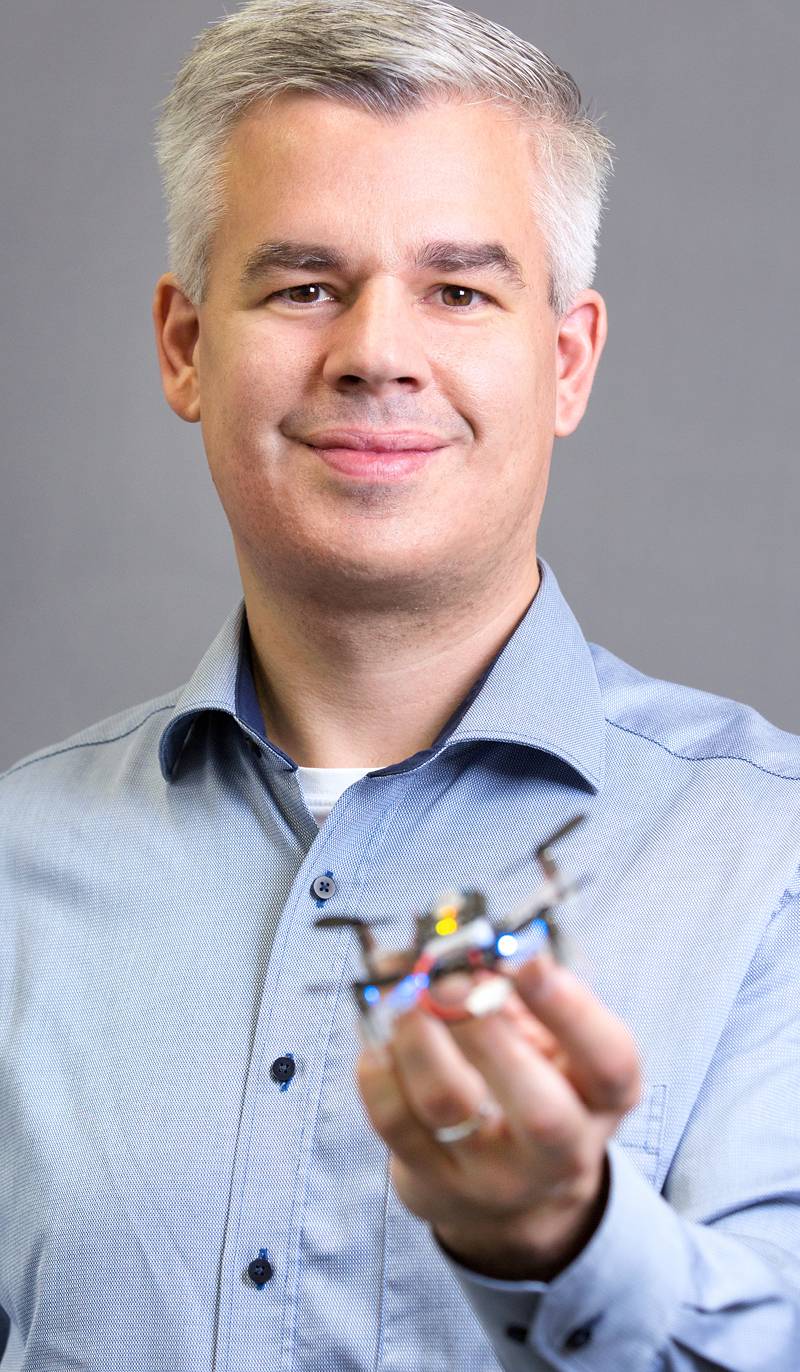
Contact
Prof. Dr.-Ing. Klaus Kefferpütz
Laborleitung
F 1.13
Phone: +49 821 5586-3165
[Bitte aktivieren Sie Javascript]
Contact for cooperation inquiries
Gabriele Schwarz
Leitung ITW
Phone: +49 821 5586-3320
[Bitte aktivieren Sie Javascript]
Homepage


